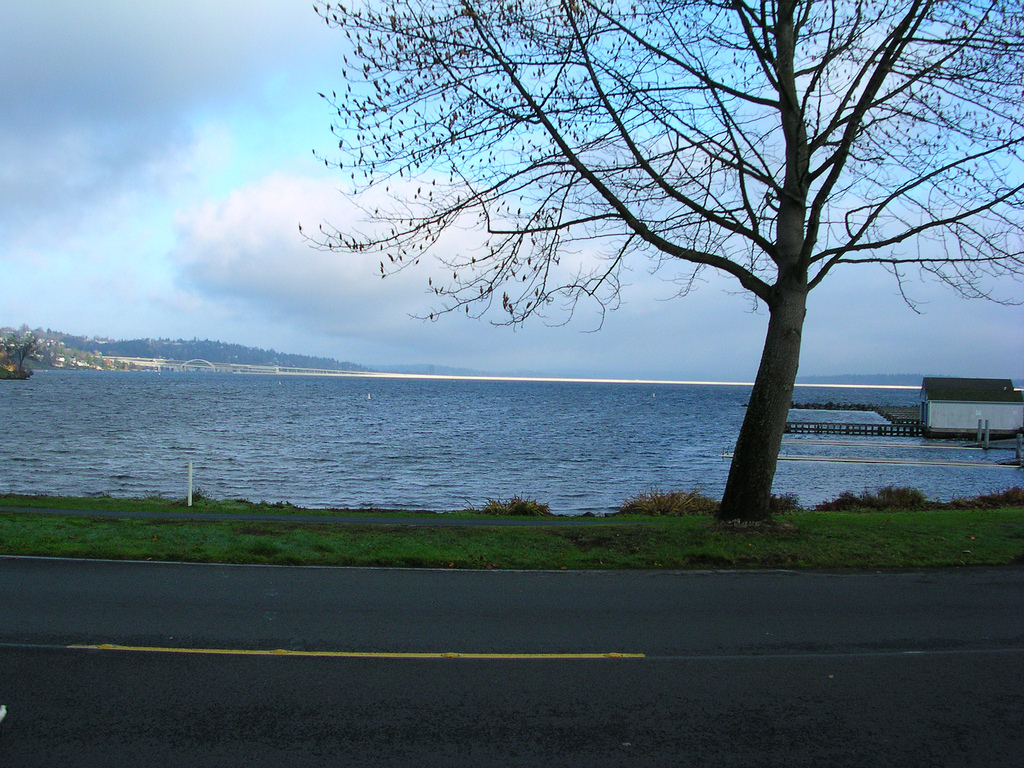Cleaning up Lake Washington
Lake Washington was heavily contaminated by untreated sewage until extensive pollution controls by the city of Seattle.

In the 1950s, an estimated 20 million gallons per day of sewage effluent entered Lake Washington from Seattle and other communities surrounding the Lake. The discovery of the cyanobacteria Oscillatoria rubescens in the lake in 1955, and the implication that phosphorus from sewage effluent was acting as fertilizer for its production, led to predictions by UW Zoology professor W.T. Edmondson and other scientists that nuisance algal conditions and water quality deterioration would worsen in the future. Although the lake was already visibly impaired, it had not yet deteriorated seriously, and the call for public action led to the creation of Metro in 1958. Between 1963 and 1968, over 100 miles of sewer trunk lines and interceptors were laid to carry sewage to treatment plants, and effluent entering the lake was reduced to zero in February, 1968. The $140 million project, considered the costliest pollution control program in the country at that time, was completely locally financed.
The transparency of Lake Washington waters responded quickly, improving from only 30 inches in 1964 to a depth of 10 feet in 1968. The elimination of the phosphorus load from effluent set off a complex chain reaction of species responses, beginning with the decline of Oscillatoria. The water flea (Daphnia) is a filter-feeding crustacean that had been suppressed by Oscillatoria because it clogs the filter apparatus of Daphnia. The decline of Oscillatoria led to an improvement in conditions for Daphnia. Daphnia had also been suppressed by its predator—the possum shrimp (Neomysis mercedis). Improvements to spawning habitat in the Cedar River led to increases in long-fin smelt (Spirinchus thaleichthys), a predator on Neomysis. The combination of these conditions allowed populations of Daphnia to increase and the Daphnia preyed on algal species, further improving the lake’s transparency to depths of 17 to 20 feet after 1976. A maximum depth of nearly 25 feet was recorded in 1993.
The application of scientific information to public action and the successful rescue of Lake Washington from deterioration has been the focus of followup research by natural and social scientists for decades, and is an internationally known example of how such efforts can work.

